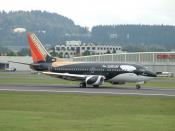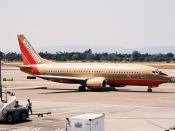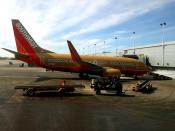After the tragedy of 9/11 grounded flights around the world, the top executives of the lead performing airline, Southwest, began to make sense of the events. The months following the terrorist act would bring about drastic changes for not only the company, but the entire industry as well. This paper will discuss the big question and opportunity facing Southwest between the end of 2001 and the end of 2002, the recommended course of actions, and the possible implications of the suggested strategy.
A question emerged following the new regulation to the airline industry post September 11; how would Southwest continue to grow in an industry with shrinking profit margins? According to Exhibit 7 in the article, Southwest Airlines 2002: An Industry Under Siege, Southwest Airlines fared well against the other major U.S. airlines from the first quarter of 2001 to the first quarter of 2002 (Haskett, 2003). The airline experienced a decrease in revenue per seat mile of $1.38
and a decrease in cost per seat mile of $0.36. While not the hardest hit in the industry, Southwest did manage to keep positive revenue to cost in cents per mile of $0.28. To sustain the level of growth held in previous years, revenue per seat mile had to increase or cost per seat mile had to decrease.
For more than three decades, Southwest served the American people exclusively with their point-to-point travel anywhere about the United States. In 1998, the airline flew its first transcontinental flight with tremendous success. The enthusiasm passengers expressed created a great opportunity for the firm in the form of long distance, point-to-point travel. Things that were found from experimentation with the longer flights included the generation of increased profits and operating cost comparable to the shorter flights Southwest was known for by customers. (Haskett, 2003)...


